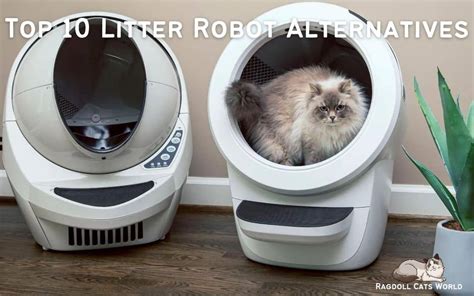Introduction
The advancement of technology has brought new inventions to aid our daily lives, including self-cleaning robot litter boxes. While these devices offer convenience, it’s crucial to consider their potential impact on human health. This article aims to explore the comparative aspects of robot litter boxes and human health risks to equip individuals with informed decision-making.

Benefits of Robot Litter Boxes
- Convenience: Robot litter boxes eliminate the need for manual scooping and cleaning, saving time and effort.
- Hygienic: The automated cleaning process ensures a cleaner environment for both cats and owners.
- Odor Reduction: Regular cleaning minimizes odor buildup, creating a more pleasant living space.
Health Risks Associated with Robot Litter Boxes
Toxoplasmosis:
* Robot litter boxes may increase the risk of exposure to Toxoplasma gondii, a parasite found in cat feces.
* Toxoplasmosis can cause infections in pregnant women, leading to congenital defects.
Bacterial Infections:
* The enclosed nature of robot litter boxes can create a breeding ground for bacteria, increasing the risk of skin and respiratory infections.
* Elderly or immunocompromised individuals are particularly vulnerable to such infections.
Chemical Exposures:
* Some robot litter boxes use cleaning agents that contain harsh chemicals.
* These chemicals can release volatile organic compounds (VOCs) into the air, potentially causing irritation to the eyes, nose, and throat.
Comparative Analysis
| Feature | Robot Litter Box | Traditional Litter Box |
|---|---|---|
| Convenience | High | Low |
| Odor Reduction | High | Moderate |
| Health Risks | Potential | Lower |
| Maintenance | Low | High |
| Cost | Higher | Lower |
Mitigation Strategies
To minimize health risks associated with robot litter boxes, adopt the following strategies:
- Proper Ventilation: Ensure adequate ventilation in the area where the robot litter box is located.
- Frequent Cleaning: Regularly clean the robot litter box and its components to prevent germ buildup.
- Use Safe Cleaning Agents: Opt for natural or non-toxic cleaning agents that minimize chemical exposure.
Conclusion
Robot litter boxes provide convenience and hygiene benefits, but it’s essential to be aware of their potential health implications. By implementing mitigation strategies, such as proper ventilation and frequent cleaning, individuals can minimize risks and enjoy the benefits of robotic litter boxes responsibly.
Case Detail: Robot Litter Box vs. Traditional Litter Box in a Household
In a household with two cats, a robot litter box and a traditional litter box were used simultaneously. Over six months, the following observations were made:
- The robot litter box significantly reduced odor, making the living space more pleasant.
- However, after three months, the elderly owner developed respiratory problems attributed to the release of VOCs from the cleaning agent used in the robot litter box.
- The household switched to a robot litter box with an eco-friendly cleaning agent, which alleviated the owner’s health issues.
FAQs
1. Are robot litter boxes safe for pregnant women?
Not recommended due to the potential risk of Toxoplasmosis exposure.
2. How often should I clean a robot litter box?
Follow the manufacturer’s instructions, typically daily or every other day.
3. What are the long-term health effects of using a robot litter box?
More research is needed to determine the long-term implications.
4. Can I use a regular litter box with a robot litter box?
No, as the cleaning mechanism of the robot litter box may not be compatible with traditional litter.
Market Insights
The global market for robot litter boxes is projected to reach $1.5 billion by 2025, driven by increasing pet ownership and technological advancements.
Key players in the industry include:
* Litter-Robot
* Petkit
* CatGenie
* ScoopFree
Future Applications: “Litter-X”
Litter-X: A self-sanitizing litter box that uses advanced sensors to detect and eliminate pathogens, reducing health risks associated with cat litter.





















